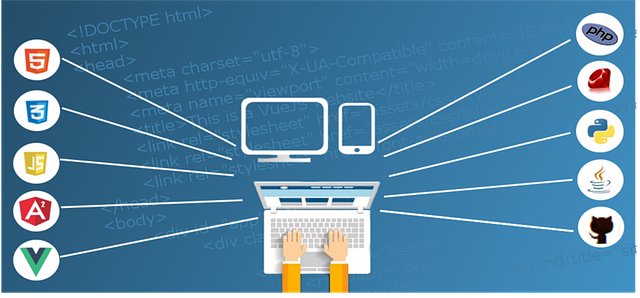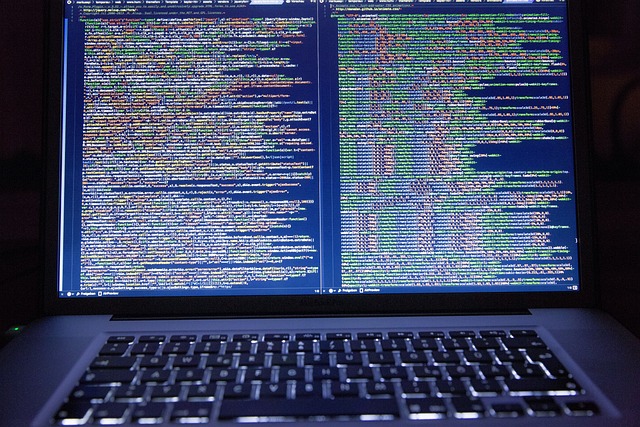The proliferation of software applications has opened up major possibilities in the world of development. But what role does design play in the software development process, and how often do developers find themselves in disagreement with design decisions? That’s the question this article seeks to answer.
In the software development world, designers need to ensure their decisions meet the needs of both the customer and the end user. But this isn’t always a straightforward process, as developers often have their own opinions and preferences when it comes to the user interface. This can create tension between the two sets of professionals, and it’s not uncommon for them to disagree on design decisions.
Recent research from McKinsey & Company indicates that such disagreements can lead to inefficiencies in the software development lifecycle, with companies losing an estimated $125 to $200 billion per year in lost revenue due to design-related issues. A survey from APG Software found that 75% of software development teams experienced prolonged timelines of two months or more due to communication challenges and disagreements over design decisions.
In this article, you will learn what it looks like when designers and developers don’t see eye to eye. We’ll discuss the challenges at hand, and explore possible solutions to bridge the divide and create a more harmonious process for developing software applications. We’ll provide tips and advice on how to ensure collaboration between designers and developers, and how to establish friendly, open channels of communication.

Definitions:
It is not unusual for developers and UI designers to have different opinions in regards to the design of an application or website – UI design decisions being the main source of disagreement.
UI design stands for user interface design, and involves the overall look and feel of an application or website. It includes decisions about the layout, colors, fonts, visual elements, and interactions.
Developers are those tasked with coding the applications and websites, which involves coding both back and front-end, and making sure it works on different devices and browsers.
Disagreements can occur due to a variety of reasons, such as technical challenges, problems understanding the original design, or conflicting design preferences.
In such situations, it is important to maintain open-mindedness and communication between the developers and UI designers, and find a compromise that meets the needs of both. By working together, the best possible UX design will be achieved.
American Developer Perspectives
The Perspective From Developers
When it comes to making decisions about User Interface (UI) design, developers and designers often have different perspectives. From a developer’s point of view, they must bring the initial concept to life, and that requires technical knowledge and programming skills. However, at the same time they also need a good design that can provide an attractive and effective user experience. So, it’s not uncommon for developers and designers to disagree on UI design decisions.
The most common point of dispute is centered on the balance between UX design and UI design. UI design focuses on providing a beautiful, attractive, and efficient interface; while UX design is more concerned with how the user interacts with the interface. Developers often favor the user experience, pushing for more UI complexity that stems from their technical knowledge. On the other hand, designers prioritize a simpler and user-friendly interface.
Several factors contribute to this disagreement. First, developers and designers have different way of thinking. Developers use logic to identify the ideal solution to a technical problem, while designers observe users’ behavior to understand how they interact with each element of the interface. Second, developers and designers often have different timelines. Developers need to deliver their project on time, so their primary concern is to solve the technical problem as quickly and efficiently as possible. Designers, meanwhile, recognize that one of the biggest challenges is to rethink the entire interface in order to create the best possible user experience.
Another factor is the different scope of their work. Developers focus on creating the software, while designers are responsible for ensuring the highest level of usability. As a result, developers often pay more attention to the technical aspects of the interface, while designers focus on the user experience.
The Best Possible Solution
The best solution to prevent this type of disagreement is to establish a collaborative environment. Developers and designers must work together to come up with a solution that meets both their needs.
By collaborating, developers and designers can work together to bridge the gap between UX design and UI design. Developers and designers can learn from each other, work on solving the problem from each other’s perspective, and develop a design that meets both user needs and technical requirements.
In order to facilitate collaboration, it is important to create an environment of trust and mutual understanding. The team has to be open to different solutions, and both developers and designers have to be ready to change their approach in order to find the best design solution.
Additionally, it is important to provide room for experimentation. By trial and error, developers and designers can explore different solutions in order to find the one that works best.
Steps To Take
In order to ensure smooth collaboration between developers and designers, here are some steps to take to ensure efficiency:
- Encourage both developers and designers to propose their solutions.
- Create transparency between developers and designers.
- Encourage developers and designers to listen to each other’s ideas and opinions.
- Make sure each team member understands the perspective of the other.
- Provide room for experimentation and exploration.
- Allow each party to revisit their solutions.
- Focus on finding the best all-around solution.
By following these steps and fostering an open and collaborative environment, it’s possible to reduce the instances of disagreement between developers and designers.
Challenges of UI Design
What is UI Design?
User Interface (UI) design is the process of designing graphical elements in software applications in order to improve interactions between users and machines. UI design focuses on creating a structured and well-organized graphical user interface that is easy for users to interact with, aesthetically pleasing, and customizable. It includes elements such as icons, buttons, windows, menus, and text fields. UI design works hand in hand with other aspects of designing software such as user experience (UX) design and visual design in order to create applications that appeal to users visually, provide intuitive methods of interaction, and are enjoyable to use.
The Challenges of UI Design
One of the most important challenges when it comes to UI design is balancing the needs of the user with the constraints of the technology. For example, designers have to be aware that some users may not have the latest technology, so they have to create an interface that works across different types of devices and platforms. This requires designers to think creatively about how to create intuitive solutions that are accessible to a wide range of users. Another challenge is keeping up with changes in technology and user expectations. For example, users are increasingly expecting faster and more intuitive experiences when using applications, so designers have to be able to quickly adapt and develop interfaces that meet these expectations.
Another challenge of UI design is ensuring that the application works correctly on all platforms and devices. This means that developers have to be conscious of the different types of browsers and devices that users may be using, and ensure that the application works the same across all of them. Additionally, designers must be aware of the various accessibility requirements that different users may have, since this can affect how an interface is created. This requires designers to be knowledgeable about various accessibility guidelines and how to create an interface that is compliant with these guidelines.
Finally, UI design can sometimes cause tension between developers and designers due to disagreements about how to create the most effective interface. This can create challenges when it comes to crafting solutions that satisfy both the needs of the user and the developers. This requires designers and developers to have efficient communication and collaboration in order to create the best possible interface.
In conclusion, UI design presents a number of challenges to developers and designers. From creating interfaces that are usable across different devices and platforms, to keeping up with changing technology, to ensuring compliance with accessibility requirements, to collaborating with developers, UI design is a complex process that requires a great deal of time, thought, and effort.
Techniques to Bridge the Gap
It is no secret that developers and designers don’t always see eye-to-eye when it comes to UI design decisions. Without productive collaboration and communication between the two groups, a successful end result often becomes a distant dream. As a developer, it can be difficult to get your point across to the UI designer, and vice versa. To bridge the gap between developers and UI designers, there are several techniques that should be employed.
Incorporate Empathy
One of the best techniques to bridge the gap between developers and UI designers is to incorporate empathy into the equation. All too often, people engage in debates without truly considering the perspective of the other person. Empathy helps build understanding and is an essential component in collaborative development. Empathy can help ensure the needs of both developers and UI designers are taken into consideration.
Focus on Respect
In addition to incorporating empathy while working to bridge the gap between developers and UI designers, focus should also be placed on respect. Respect is important in helping two teams work together to come up with the best possible design decisions. A lack of respect can lead to an atmosphere of mistrust and tension that can hinder the progress of development.
Encourage Regular Meetings
Regular meetings are a good way to bridge the gap between developers and UI designers. They help ensure that no individual’s ideas are drowned out, and that all factors are taken into consideration. During these meetings, it is important to remember to ask open-ended questions and to encourage discussion in a constructive manner.
By incorporating empathy, focusing on respect, and encouraging regular meetings, developers and UI designers can bridge the gap and work together to come up with the best design decisions. Working with empathy and respect not only leads to a better working environment, but it can also help move the development project along more efficiently. By employing these techniques, developers and UI designers can make sure their working relationship is successful.
Conclusion
The question of how often developers disagree with UI design decisions is a complex one with no easy answer. It’s a question that has a lot of complexity, as different people bring different perspectives and experience to the table. At the same time, it’s an important issue that needs to be addressed if developers and designers are to be successful in creating user-friendly interfaces.
If you want to stay up to date on the latest developments in this debate, be sure to follow our blog! We’ll continue to bring new insights and perspectives to the conversation, so don’t forget to check back for new releases.
FAQ
Q: How can developers and designers ensure that their interfaces are user-friendly?
A: Developers and designers need to take the time to understand user behavior and preferences before beginning the design process. Additionally, communication between the two groups should always be encouraged to ensure that different perspectives are taken into account.
Q: What can developers do to help address disagreements on UI design decisions?
A: Before making any design decisions, developers should take into account the overall goals of the project as well as any feedback from UX professionals. Additionally, it’s important to be open to different perspectives and to compromise whenever possible.
Q: What are some of the consequences of not resolving disagreement on UI design decisions?
A: If disagreements on UI design decisions are not addressed in a timely manner, it can lead to poor user experiences, decreased customer satisfaction, and delays in the development process.
Q: What are some strategies for overcoming disagreements on UI design decisions?
A: Listening to user feedback, effective communication between developers and designers, and finding common ground between different perspectives are all important strategies for resolving disagreement on UI design decisions. Additionally, staying mindful of the project goals and timeline can also help ensure that decision are made in an efficient manner.
Q: What are the benefits of effective UI design decisions?
A: Effective UI design decisions are essential for creating user-friendly interfaces. This can lead to increased user satisfaction, greater engagement with the product, and can ultimately result in greater ROI for the business.



